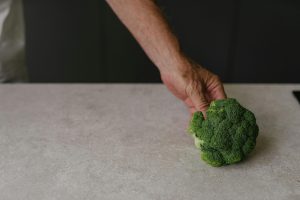Allergy-Friendly Baking: Sweet Success
In today’s society, more and more people are developing allergies, whether it be to food, animals, or the environment. This has made it difficult for those with allergies to enjoy certain things, including baked goods. Traditional baking often involves ingredients that could trigger an allergic reaction, making it challenging for individuals with allergies to indulge in sweet treats. However, with the rise of allergy-friendly baking, those with allergies can now enjoy delicious baked goods with no worries. In this article, we will explore the world of allergy-friendly baking and how it has been a sweet success for those with allergies.
Allergy-Friendly Baking: What is it?
Allergy-friendly baking is the process of making baked goods that are free from common allergens such as gluten, dairy, nuts, and eggs. These allergens can cause severe reactions in some individuals, making it essential to exclude them from their diet. With allergy-friendly baking, creative substitutes are used to achieve the same delicious flavors and textures without compromising on taste. This allows individuals with allergies to safely enjoy their favorite baked treats without any fear.
The Rise of Allergy-Friendly Baking
The demand for allergy-friendly baking has increased significantly in recent years due to the rise in food allergies. In the United States alone, it is estimated that about 32 million people have food allergies. This has led to a surge in bakeries, cafes, and restaurants offering allergy-friendly options on their menus to cater to this growing population. Online platforms and social media have also played a significant role in promoting allergy-friendly baking by sharing recipes and tips for creating allergy-friendly baked goods at home.
Allergy-Friendly Baking Substitutes
Flour Substitutes
Wheat flour, commonly used in traditional baking, contains gluten, making it unsuitable for those with celiac disease or a gluten intolerance. In allergy-friendly baking, various flour substitutes are used, such as almond flour, coconut flour, rice flour, and oat flour. These flours are gluten-free and can be used in place of wheat flour to make delicious goodies such as cookies, cakes, and bread.
Milk Substitutes
Milk is a common ingredient in baked goods, but it can be problematic for individuals who are lactose intolerant or have a milk allergy. Luckily, there are numerous dairy-free milk substitutes available, such as almond milk, coconut milk, and oat milk. These milk alternatives can be used as a 1:1 replacement for cow’s milk in recipes without compromising on taste or texture.
Egg Substitutes
Eggs are a crucial ingredient in baking as they provide structure and moisture to baked goods. However, they can be problematic for individuals with an egg allergy. Thankfully, there are various egg substitutes that can be used in allergy-friendly baking, such as flax eggs, chia eggs, and applesauce. These substitutes work well in most recipes and are a great alternative for those with egg allergies.
The Benefits of Allergy-Friendly Baking
One of the significant benefits of allergy-friendly baking is that it allows individuals with allergies to enjoy delicious baked goods without any fear. They no longer have to miss out on birthday cakes, holiday treats, or desserts, like everyone else. Allergy-friendly baking also promotes inclusivity, as it makes it possible for those with specific dietary restrictions to join in on the food festivities without feeling left out. Additionally, allergy-friendly baking encourages creativity and innovation as bakers experiment with different substitutes to achieve the same tasty results.
In Conclusion
Allergy-friendly baking has truly been a sweet success for those with allergies. It has made it possible for them to enjoy baked goods without the risk of an allergic reaction. With the rise in demand for allergy-friendly options, there are more and more options available, making it easier for those with allergies to indulge in their favorite treats. As we continue to prioritize inclusivity and diversity, let’s not forget about those with allergies and continue to support and promote allergy-friendly baking.










